Nicolò Dal Fabbro
VREM-FL: Mobility-Aware Computation-Scheduling Co-Design for Vehicular Federated Learning
Nov 30, 2023Abstract:Assisted and autonomous driving are rapidly gaining momentum, and will soon become a reality. Among their key enablers, artificial intelligence and machine learning are expected to play a prominent role, also thanks to the massive amount of data that smart vehicles will collect from their onboard sensors. In this domain, federated learning is one of the most effective and promising techniques for training global machine learning models, while preserving data privacy at the vehicles and optimizing communications resource usage. In this work, we propose VREM-FL, a computation-scheduling co-design for vehicular federated learning that leverages mobility of vehicles in conjunction with estimated 5G radio environment maps. VREM-FL jointly optimizes the global model learned at the server while wisely allocating communication resources. This is achieved by orchestrating local computations at the vehicles in conjunction with the transmission of their local model updates in an adaptive and predictive fashion, by exploiting radio channel maps. The proposed algorithm can be tuned to trade model training time for radio resource usage. Experimental results demonstrate the efficacy of utilizing radio maps. VREM-FL outperforms literature benchmarks for both a linear regression model (learning time reduced by 28%) and a deep neural network for a semantic image segmentation task (doubling the number of model updates within the same time window).
Q-SHED: Distributed Optimization at the Edge via Hessian Eigenvectors Quantization
May 18, 2023

Abstract:Edge networks call for communication efficient (low overhead) and robust distributed optimization (DO) algorithms. These are, in fact, desirable qualities for DO frameworks, such as federated edge learning techniques, in the presence of data and system heterogeneity, and in scenarios where internode communication is the main bottleneck. Although computationally demanding, Newton-type (NT) methods have been recently advocated as enablers of robust convergence rates in challenging DO problems where edge devices have sufficient computational power. Along these lines, in this work we propose Q-SHED, an original NT algorithm for DO featuring a novel bit-allocation scheme based on incremental Hessian eigenvectors quantization. The proposed technique is integrated with the recent SHED algorithm, from which it inherits appealing features like the small number of required Hessian computations, while being bandwidth-versatile at a bit-resolution level. Our empirical evaluation against competing approaches shows that Q-SHED can reduce by up to 60% the number of communication rounds required for convergence.
Federated TD Learning over Finite-Rate Erasure Channels: Linear Speedup under Markovian Sampling
May 14, 2023


Abstract:Federated learning (FL) has recently gained much attention due to its effectiveness in speeding up supervised learning tasks under communication and privacy constraints. However, whether similar speedups can be established for reinforcement learning remains much less understood theoretically. Towards this direction, we study a federated policy evaluation problem where agents communicate via a central aggregator to expedite the evaluation of a common policy. To capture typical communication constraints in FL, we consider finite capacity up-link channels that can drop packets based on a Bernoulli erasure model. Given this setting, we propose and analyze QFedTD - a quantized federated temporal difference learning algorithm with linear function approximation. Our main technical contribution is to provide a finite-sample analysis of QFedTD that (i) highlights the effect of quantization and erasures on the convergence rate; and (ii) establishes a linear speedup w.r.t. the number of agents under Markovian sampling. Notably, while different quantization mechanisms and packet drop models have been extensively studied in the federated learning, distributed optimization, and networked control systems literature, our work is the first to provide a non-asymptotic analysis of their effects in multi-agent and federated reinforcement learning.
A CSI Dataset for Wireless Human Sensing on 80 MHz Wi-Fi Channels
Apr 29, 2023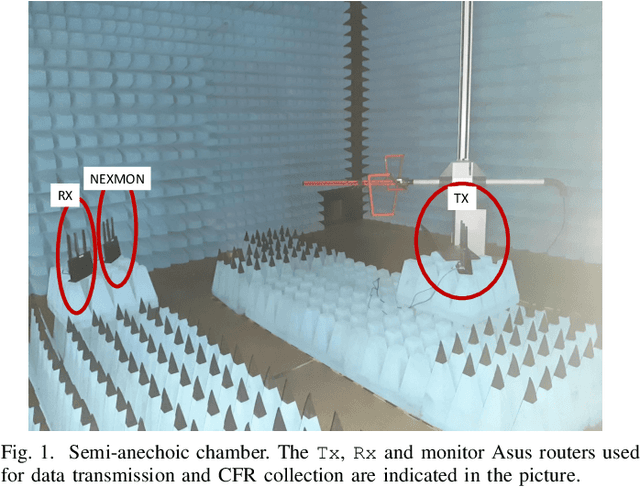
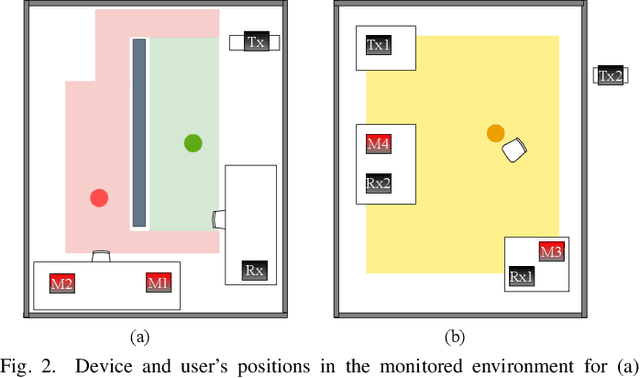
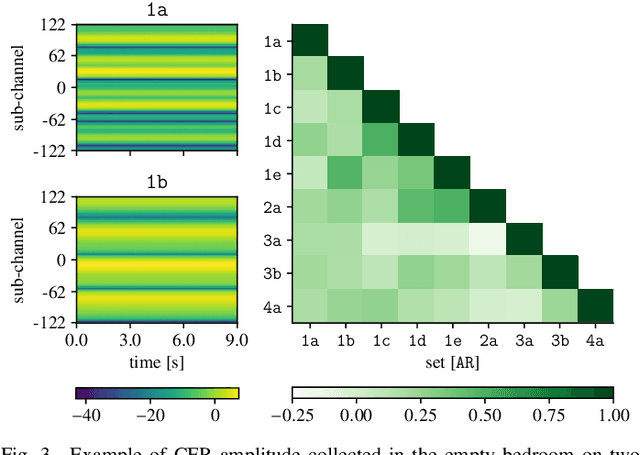

Abstract:In the last years, several machine learning-based techniques have been proposed to monitor human movements from Wi-Fi channel readings. However, the development of domain-adaptive algorithms that robustly work across different environments is still an open problem, whose solution requires large datasets characterized by strong domain diversity, in terms of environments, persons and Wi-Fi hardware. To date, the few public datasets available are mostly obsolete - as obtained via Wi-Fi devices operating on 20 or 40 MHz bands - and contain little or no domain diversity, thus dramatically limiting the advancements in the design of sensing algorithms. The present contribution aims to fill this gap by providing a dataset of IEEE 802.11ac channel measurements over an 80 MHz bandwidth channel featuring notable domain diversity, through measurement campaigns that involved thirteen subjects across different environments, days, and with different hardware. Novel experimental data is provided by blocking the direct path between the transmitter and the monitor, and collecting measurements in a semi-anechoic chamber (no multi-path fading). Overall, the dataset - available on IEEE DataPort [1] - contains more than thirteen hours of channel state information readings (23.6 GB), allowing researchers to test activity/identity recognition and people counting algorithms.
A Newton-type algorithm for federated learning based on incremental Hessian eigenvector sharing
Feb 11, 2022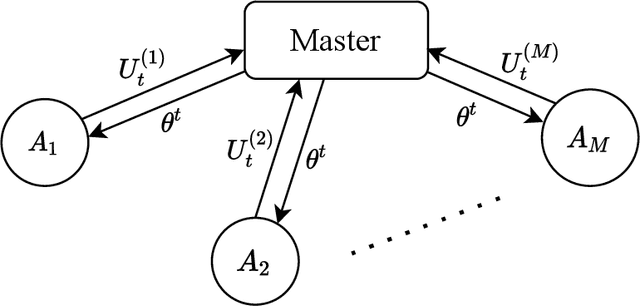
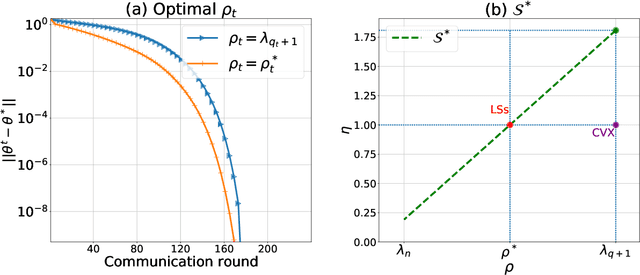
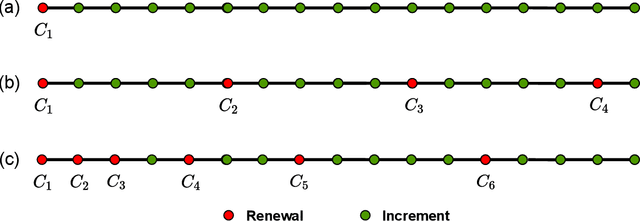
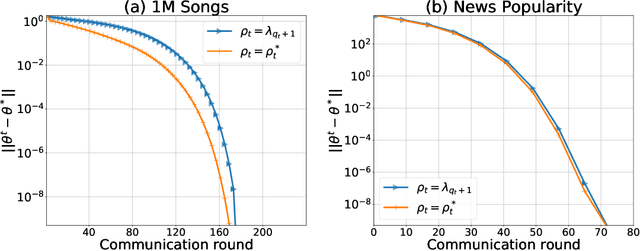
Abstract:There is a growing interest in the decentralized optimization framework that goes under the name of Federated Learning (FL). In particular, much attention is being turned to FL scenarios where the network is strongly heterogeneous in terms of communication resources (e.g., bandwidth) and data distribution. In these cases, communication between local machines (agents) and the central server (Master) is a main consideration. In this work, we present an original communication-constrained Newton-type (NT) algorithm designed to accelerate FL in such heterogeneous scenarios. The algorithm is by design robust to non i.i.d. data distributions, handles heterogeneity of agents' communication resources (CRs), only requires sporadic Hessian computations, and achieves super-linear convergence. This is possible thanks to an incremental strategy, based on a singular value decomposition (SVD) of the local Hessian matrices, which exploits (possibly) outdated second-order information. The proposed solution is thoroughly validated on real datasets by assessing (i) the number of communication rounds required for convergence, (ii) the overall amount of data transmitted and (iii) the number of local Hessian computations required. For all these metrics, the proposed approach shows superior performance against state-of-the art techniques like GIANT and FedNL.
Environment and Person Independent Activity Recognition with a Commodity IEEE 802.11ac Access Point
Mar 17, 2021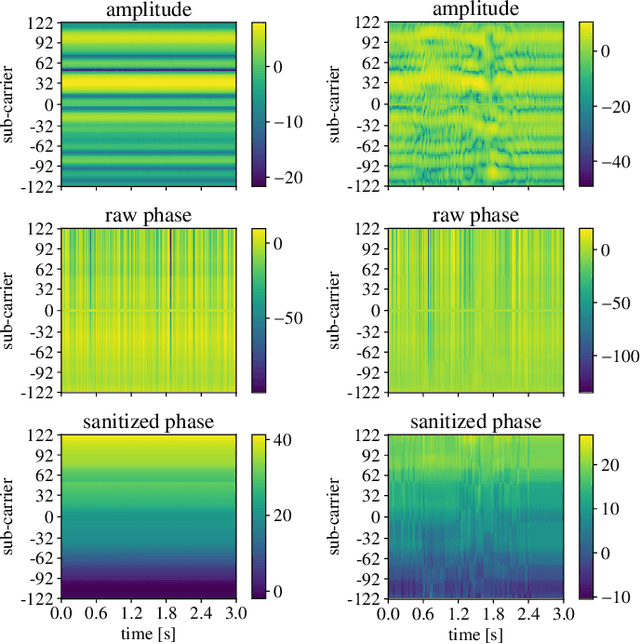
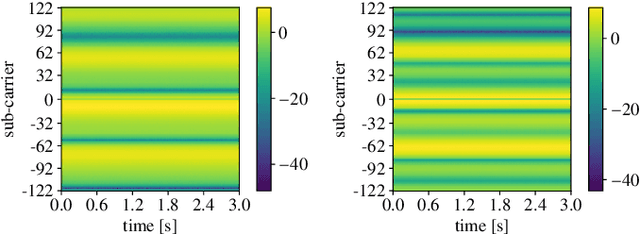

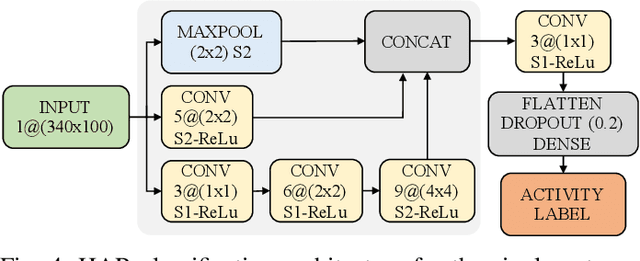
Abstract:Here, we propose an original approach for human activity recognition (HAR) with commercial IEEE 802.11ac (WiFi) devices, which generalizes across different persons, days and environments. To achieve this, we devise a technique to extract, clean and process the received phases from the channel frequency response (CFR) of the WiFi channel, obtaining an estimate of the Doppler shift at the receiver of the communication link. The Doppler shift reveals the presence of moving scatterers in the environment, while not being affected by (environment specific) static objects. The proposed HAR framework is trained on data collected as a person performs four different activities and is tested on unseen setups, to assess its performance as the person, the day and/or the environment change with respect to those considered at training time. In the worst case scenario, the proposed HAR technique reaches an average accuracy higher than 95%, validating the effectiveness of the extracted Doppler information, used in conjunction with a learning algorithm based on a neural network, in recognizing human activities in a subject and environment independent fashion.
 Add to Chrome
Add to Chrome Add to Firefox
Add to Firefox Add to Edge
Add to Edge